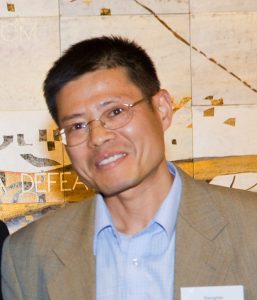
Dr Xiangjian Zheng
Ponatinib dials down the hyperactive signalling pathway of the enzyme MEKK3 associated with mutations in cerebral cavernous malformation (CCM) genes.
The pre-clinical research opens up the potential for a treatment to prevent CCM initiation or progression and reduce the risk of sequelae such as stroke and neurological deficits.
The limbic asked Dr Xiangjian Zheng, head of the Laboratory of Cardiovascular Signalling at the Centenary Institute and a senior lecturer in the School of Medicine at the University of Sydney, about the findings.
The study found a single dose of ponatinib reduced the number and size of new CCM lesions in animals with an induced CCM1 or CCM2 deletion. Can you explain how it works?
It has been known for about two decades that mutations in any of three genes CCM1, CCM2 and CCM3 can lead to CCM disease. Only a few years ago, in a study focused on cardiac development, we identified that loss of function of CCM genes causes abnormal activation of MEKK3/KLF signal. The causal role for a hyperactive MEKK3/KLF signal in CCM pathogenesis was subsequently confirmed in mouse models of CCM and human CCM lesions. Following these leads, we screened FDA-approved kinase inhibitors to search for chemical compounds effective in inhibiting MEKK3/KLF signal. We identified ponatinib is able to block MEKK3 kinase activity and the elevated KLF2 expression conferred by CCM gene function deficiency. The use of ponatinib in animal models confirms it is effective in blocking CCM lesion formation. Our molecular studies support ponatinib’s effectiveness for CCM by blocking MEKK3/KLF signal and subsequent cell morphological changes related to the activation of MEKK3/KLF.
As well as limiting the development of new lesions, ponatinib may have an impact on already established lesions. What did the study find?
In genetic studies, we found MEKK3 is essential for CCM lesion initiation. But due to the limitation in temporal control of those genetic models, we are not sure whether MEKK3/KLF is also involved in lesion growth. In this study, we can treat the model animals with the compound at a time-point when CCM lesions have been well established. We found ponatinib is very effective in limiting the growth of formed CCM lesions. This is relevant for human CCM disease treatment, because CCM is mostly identified by MRI scans after patients have presented with symptoms. A drug capable of limiting CCM lesion growth and preventing bleeding is more applicable in clinical practice.
Ponatinib is currently used to treat haematological cancers. When might we expect to see it trialled in human CCM disease?
We are actively interacting with neurologists and neurosurgeons to assess the feasibility of testing this drug in CCM patients. There are still two major issues to be cleared. Firstly, ponatinib is a very effective inhibitor in cancer treatment, but comes with significant off-targets and side effects such as pancreatitis and cardiovascular events. We plan to further test the pharmacokinetic/pharmacodynamics of ponatinib with optimal low dosage and the potential adverse effects in preclinical models. Secondly, given the known side effects found during cancer treatment, our plan is to trial this drug on patients in whom surgery is no longer an option. Current assessment is that about 1% of diagnosed CCM patients fall into this category. CCM is a rare disease and the total number of these severe cases is limited. We will need to coordinate with clinical centres globally to register such cases.